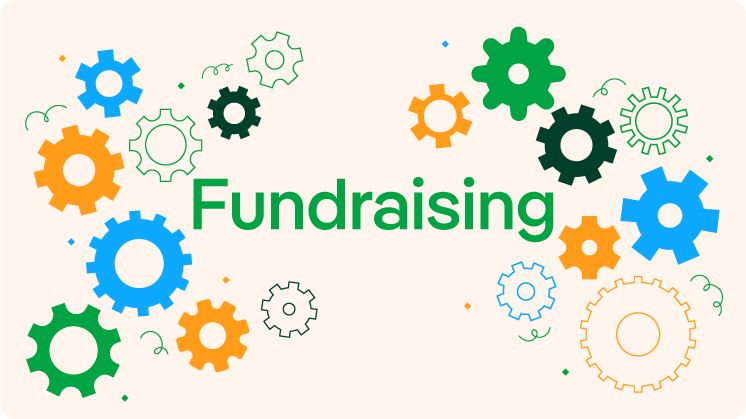Leading Nonprofit Fundraising Ideas: Cutting-edge Strategies to Raise More Funds
Leading Nonprofit Fundraising Ideas: Cutting-edge Strategies to Raise More Funds
Blog Article
The Function of Community Interaction in Nonprofit Fundraising: Building Lasting Relationships for Sustainable Support
Community involvement is progressively identified as a crucial element of successful nonprofit fundraising. By promoting genuine partnerships with regional stakeholders, organizations can grow trust fund and loyalty, which are vital for sustainable support. However, the techniques and techniques used to engage areas differ extensively, increasing important inquiries about effectiveness and impact. What are the very best techniques for cultivating these crucial connections, and exactly how can nonprofits gauge their success in this field? Understanding these dynamics can dramatically affect the future of fundraising efforts and the total mission of not-for-profit organizations.
Recognizing Area Involvement
Community engagement is an essential element of effective nonprofit fundraising efforts. Nonprofits have to recognize vital stakeholders-- such as community participants, local companies, and various other companies-- to create reliable engagement techniques.
Efficient neighborhood interaction is based on energetic listening and responsiveness to the requirements and interests of the community. This procedure entails obtaining comments, comprehending area characteristics, and guaranteeing that the organization's mission aligns with neighborhood top priorities. Involving the neighborhood can take various kinds, consisting of public conferences, volunteer opportunities, and collaboration campaigns, each created to motivate involvement and investment in the organization's goals.
Furthermore, community engagement should be approached as an ongoing discussion as opposed to an one-time effort. By cultivating an inclusive setting where community voices are listened to and valued, nonprofits can develop a solid structure for future fundraising endeavors. Eventually, a deep understanding of neighborhood involvement equips companies to develop genuine connections that enhance their overall performance and sustainability.
Benefits of Solid Relationships
Solid relationships created through area engagement return many advantages for not-for-profit fundraising efforts. Most importantly, these partnerships foster depend on and credibility, vital elements in motivating benefactors to contribute. When possible fans see a not-for-profit proactively associated with their community, they are most likely to count on its objective and influence.

Furthermore, these partnerships promote efficient interaction. Nonprofits can leverage their connections to share tales of impact, updates, and needs, ensuring that supporters continue to be educated and engaged. This open line of communication not just reinforces bonds however additionally motivates word-of-mouth promotion, increasing the not-for-profit's reach.
Lastly, strong community ties can bring in new companions and sponsors. Companies and individuals are a lot more likely to straighten with organizations that show meaningful community involvement, supplying extra resources and support that can significantly improve fundraising abilities. Hence, cultivating robust relationships via neighborhood engagement is important to a nonprofit's lasting fundraising success.
Techniques for Effective Engagement
How can nonprofits efficiently involve their communities to enhance fundraising efforts? Establishing targeted methods is vital for fostering meaningful links. Initially, leveraging social media sites platforms makes it possible for organizations to share their mission dynamically and interactively, getting to a broader audience. Normal updates, involving material, and calls-to-action can galvanize neighborhood interest and participation.
Second, holding neighborhood events, such as workshops, volunteer opportunities, or fundraising drives, facilitates in person communication, enabling nonprofits to showcase their influence and initiatives. These occasions not just increase funds however also cultivate connections and allow neighborhood members to involve directly with the cause.
Third, executing customized interaction strategies can improve interaction. Customizing messages to details benefactor sections based on passions and previous payments promotes a sense of belonging and investment in the organization's goal.
Finally, developing collaborations with regional services and neighborhood leaders can amplify outreach initiatives. Collaborative campaigns can boost visibility and integrity, demonstrating a cumulative commitment to the neighborhood's well-being. By integrating these methods, nonprofits can construct long-term connections that enhance fundraising initiatives and drive sustainable assistance.
Gauging Engagement Success
While involving the community is crucial for effective not-for-profit fundraising, measuring the efficiency of these engagement efforts is just as vital. Establishing clear metrics allows companies to examine just how well they are attaching with their audience and attaining their fundraising objectives. Secret efficiency indicators (KPIs) such as contributor retention rates, volunteer participation levels, and interaction on social networks systems supply tangible data for analysis.

Frequently evaluating these metrics allows organizations to pivot their methods when required, ensuring that neighborhood involvement stays lined up with their general mission. Furthermore, sharing these results with stakeholders fosters openness and constructs count on, motivating additional community participation. Ultimately, a robust measurement structure not just informs future fundraising campaigns yet additionally strengthens the relationship between the not-for-profit and its supporters, preparing for lasting success.
Study in Area Influence
Many case researches highlight the extensive influence that community engagement can carry not-for-profit fundraising success. One remarkable instance is the "Something to chew on" campaign, where a regional food financial institution partnered with schools and services to host area dinners. These occasions not only raised funds however additionally fostered a sense of belonging amongst individuals, considerably boosting contributor retention rates.
An additional engaging instance is the "Green Spaces Task," which involved local citizens in the revitalization of metropolitan parks. This effort not only garnered financial backing from local companies however additionally cultivated a volunteer base that added to recurring upkeep and shows. The feeling of possession and pride amongst neighborhood members converted right into sustained contributions.
In the world of click this arts, the "Art for All" campaign effectively engaged regional musicians and customers to create collaborative art installations, bring about raised exposure and contributions for a local arts not-for-profit.
These instances highlight that when nonprofits focus on community involvement, they can produce lasting partnerships that enhance fundraising view it initiatives, ensuring lasting assistance and fostering a vibrant neighborhood culture. Such instances show that neighborhood interaction is not merely an approach yet an important column of nonprofit success.
Verdict
Finally, neighborhood interaction is important to the success of not-for-profit fundraising efforts. By fostering strong connections with regional stakeholders, organizations enhance trust and credibility, bring about enhanced donor retention and loyalty. Implementing efficient engagement methods and determining their impact guarantees that nonprofits can adjust and prosper. Inevitably, a robust structure of neighborhood assistance not only amplifies fundraising prospective but additionally grows a culture of collaboration, important for attaining lasting organizational goals and sustaining significant influence.
Nonprofits should determine key stakeholders-- such as area participants, local organizations, and various other companies-- to produce efficient involvement methods.

In verdict, Get More Info area involvement is integral to the success of not-for-profit fundraising initiatives.
Report this page